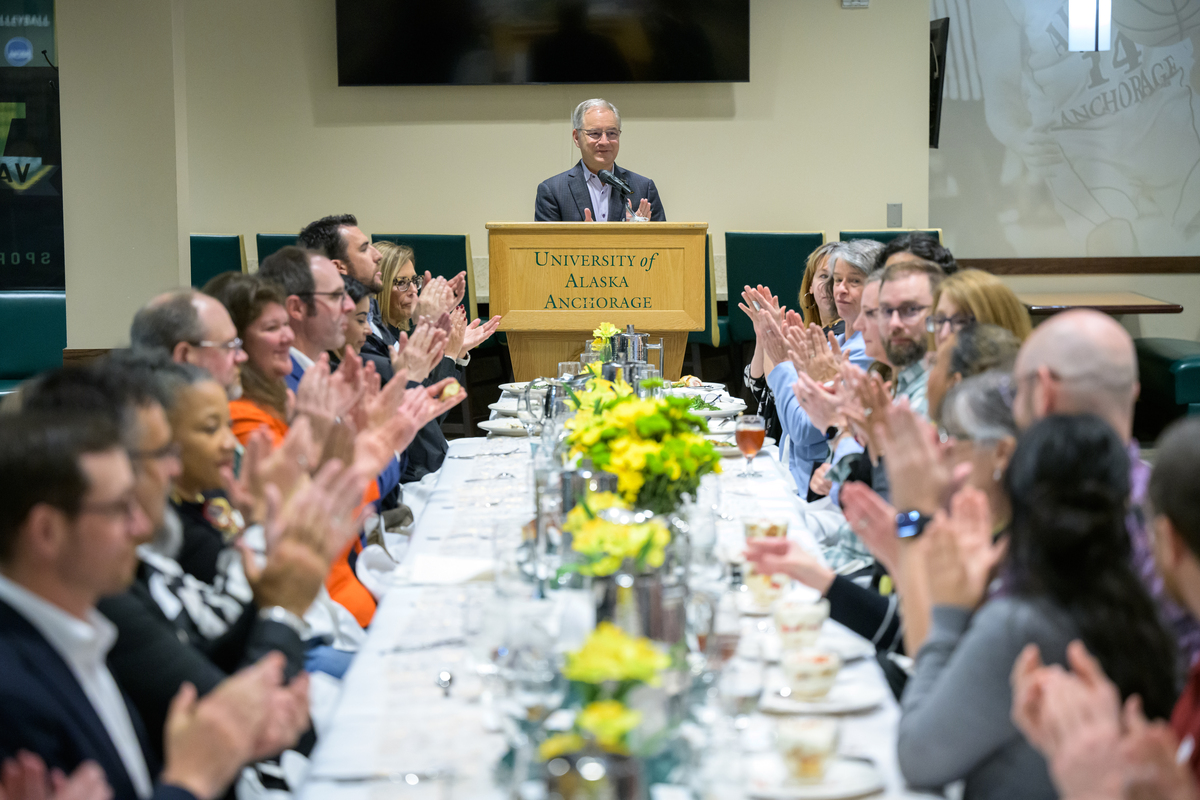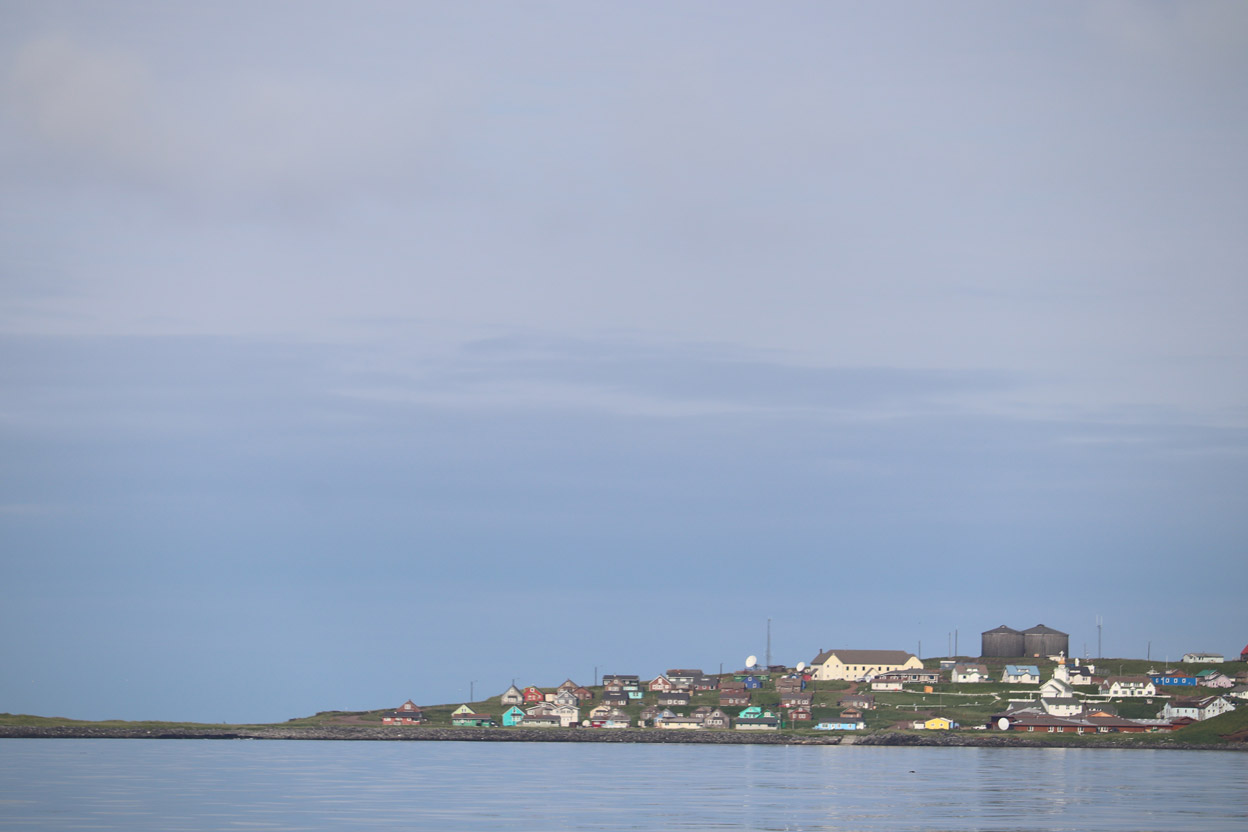Scholarly Chronicles: Faculty Voices in Print
by Green & Gold News |
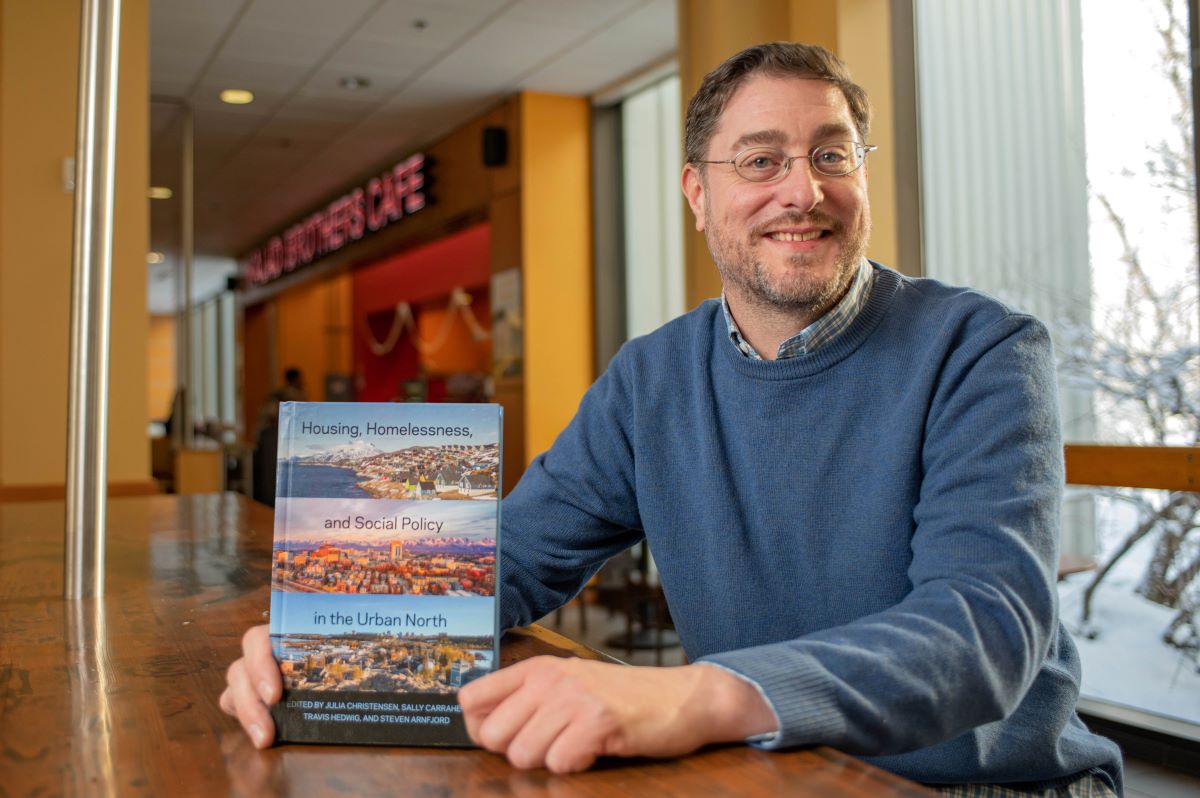
Scholarly Chronicles: Faculty Voices in Print recognizes the achievements of UAA’s faculty, highlighting their dedication to advancing knowledge in their distinct fields. Through their published research in academic journals, papers and books, they continue to make impactful contributions in the classroom and beyond.
Travis Hedwig, assistant dean, associate professor, Division of Population Health Sciences, College of Health
“One of the unique contributions of this book is that it’s the first — to our knowledge — to look at housing and homelessness through a circumpolar, Arctic lens,” said Travis Hedwig, associate professor in UAA College of Health’s Division of Population Health Sciences. “It also brings together academics, policymakers, community-based providers and a variety of stakeholders with a unique perspective on homelessness.”
Hedwig, an alumni, graduated with a master’s degree from UAA in applied anthropology in 2006 and said his studies sparked his interest in community-based research on housing and homelessness. He returned to UAA as a postdoctoral student in 2013, working at the Institute for Circumpolar Health Studies, which reignited his interest in studying the unique housing challenges of the far North.
“One of the complex aspects we face in Alaska is the distinct disparities related to urban and rural communities,” Hedwig said. Hedwig and his co-authors examine the complex issue of housing insecurity across the Circumpolar North, what are some of the common problems and how can small northern communities and their larger cities develop more informed and inclusive policy to address the unique housing needs of the Arctic. “We also have unique challenges related to labor and migration patterns in our state.”
Hedwig says he is hoping to create a special topics course on housing and homelessness in the Circumpolar North, using the book as a guide and inviting his co-authors as guest lecturers.
“It would be an opportunity for students at UAA to learn more about this really pressing, emerging and important issue in our state,” Hedwig said. “It would be an interdisciplinary approach because while I work in the College of Health, my co-contributors work in many different fields.”
Melissa A. Chlupach, assistant professor, School of Allied Health, College of Health
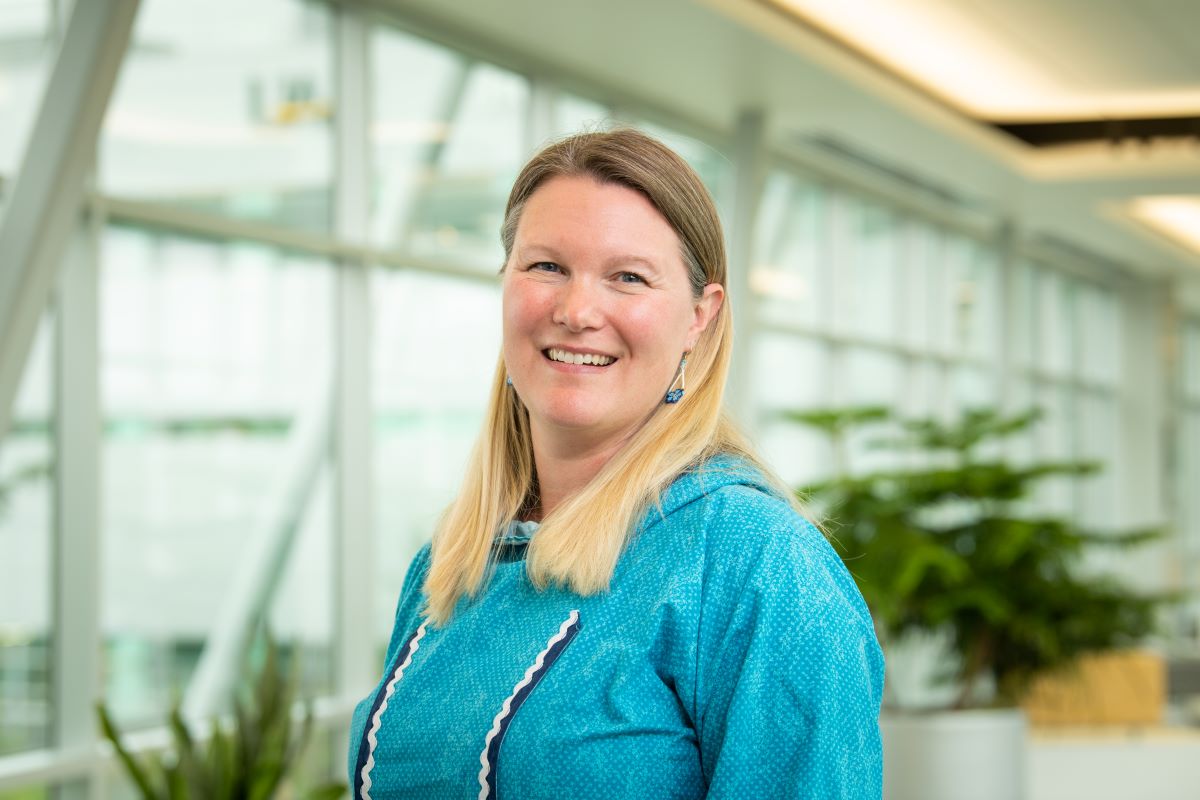
What began as an idea about older adults and their long-term relationships with food, turned into a powerful, personal and evocative piece about the resurgence of Indigenous food traditions and their importance in healing the body and spirit.
Melissa Chlupach is a registered dietitian nutritionist and assistant professor in Dietetics and Nutrition in the College of Health’s School of Allied Health. She teaches courses, such as Survey of Alaska Native Nutrition, Nutrition through the Life Cycle and Food and Nutrition in Modern Alaska. Melissa is the project manager for UAA's Alaska Traditional Kitchen and is on the Alaska Food Policy Council board. Her biggest and most rewarding project is the traditional foods initiative and movement for the State of Alaska, helping implement traditional food donation programs. Melissa's goal is to bring people together to share best practices so we can learn from each other, promoting health and wellness throughout our communities.
Erik Hirschmann, professor, Social Sciences and History, Department of Social Sciences, Mat-Su College
Voyage of the Eclipse, published by Epicenter Press (Kenmore, Washington) in 2023
A work of historical fiction grounded in extensive research of the early 19th-century maritime fur trade, Voyage of the Eclipse follows a crew out of Boston on an epic voyage to southeast Alaska during 1801-1802.
It was a world where young American sailors in their teens and twenties faced immense physical and psychological pressures across tens of thousands of nautical miles, stresses that sometimes culminated in tragedy and catastrophe.
The inspiration for writing this novel emanated from a deep desire to entertain and educate readers in an often lost and forgotten part of American history. Well before 19th-century events like the Lewis & Clark Expedition, Rocky Mountain Fur Trade and Oregon Trail migration, young New England sailors engaged with Native Hawaiian and Alaska Native cultures, Russian fur hunters and Chinese merchants on a regular basis. Voyage of the Eclipse is for fans of fast-paced action adventure novels, with heavy doses of treachery and touches of heroism and romance.
Britteny M. Howell, associate professor, Division of Population Health Sciences and Ryan Harrod, associate professor, Department of Anthropology and Geography
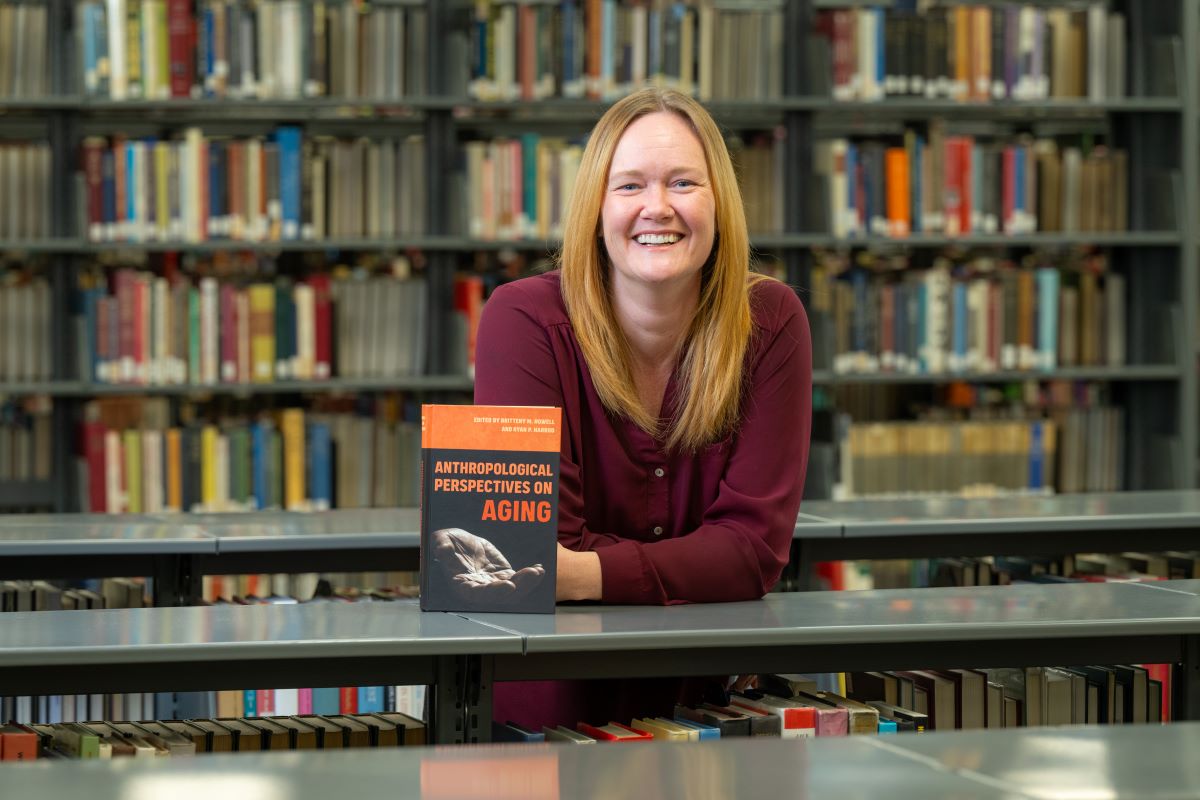
Anthropological Perspectives on Aging
Taking a holistic approach to the study of aging, this volume uses biological, archaeological, medical and cultural perspectives to explore how older adults have functioned in societies around the globe and throughout human history.
As the world’s population over 65 years of age continues to increase, this wide-ranging approach fills a growing need for both academics and service professionals in gerontology, geriatrics and related fields. Case studies from the United States, Tibet, Turkey, China, Nigeria and Mexico provide examples of the ways age-related changes are influenced by environmental, genetic, sociocultural and political-economic variables.
Taken together, they help explain how the experience of aging varies across time and space. These contributions from noted anthropological scholars examine evolutionary and biological understandings of human aging, the roles of elders in various societies, issues of gender and ageism, and the role of chronic illness and “successful aging” among older adults.
This volume highlights how an anthropology of aging can illustrate how older adults adapt to shifting life circumstances and environments, including changes to the ways in which individuals and families care for them. The research in Anthropological Perspectives on Aging can also help researchers, students and practitioners reach across disciplines to address age discrimination and help improve health outcomes throughout the life course.
Amana Mbise, assistant professor, School of Social Work
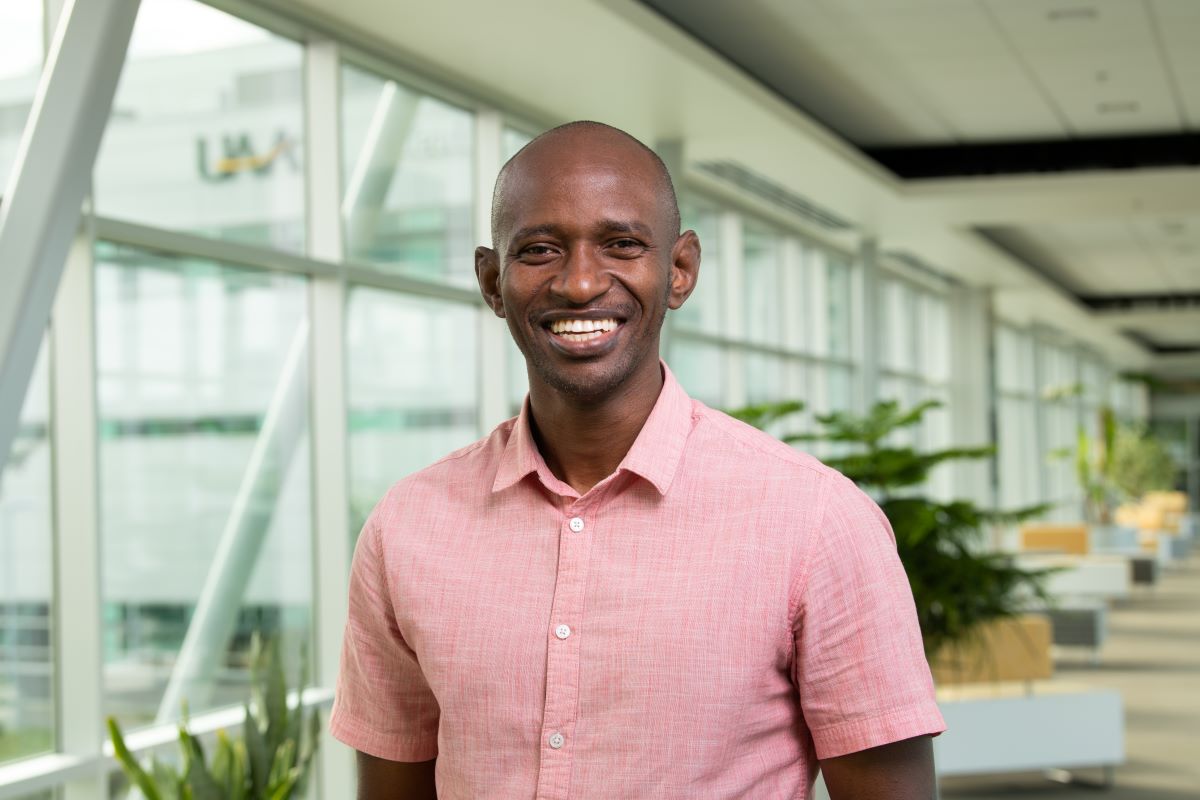
Black Alaskans Health Needs Assessment during COVID-19 Pandemic: Implications for Social Work
At the peak of the COVID-19 pandemic it became clear that Black people were experiencing more severe symptoms and had higher rates of mortality from COVID-19 than White people. However, data on racial differences in death and hospitalization rates in Alaska were less clear. To address this, the Alaska Black Caucus initiated the first Black Alaskans health needs assessment to understand the health status, needs and resources of the Black community of Alaska.
The findings indicate that a majority of Black Alaskans report being moderately healthy, having access to health insurance, owning their homes and having a favorable view of their neighborhood. However, too many are unable to work due to poor physical or mental health challenges and are diagnosed with one or more chronic health diseases. In addition, Black Alaskans experience high rates of substance abuse, have untreated mental health conditions, consume tobacco products at a high rate and are not screening for some cancers.
Terry Nelson, interim dean, College of Business and Public Policy
Teaching about race as an African American female instructor at a predominantly white university has its challenges, especially regarding classroom power and privilege dynamics.
I use the concepts of intersectionality and positionality as frameworks to explain the experiences that I encountered in the classroom, usually as the only African American in the room. I share two scenarios that initiated my inquisitiveness to discover more about why the incidents occurred.
At the conclusion of the paper, I reveal how the complementary value of intersectionality and positionality benefits all educators who desire to comprehend the hierarchical power and privilege that may interplay in the learning environment.
James Pantaleone, professor, Department of Physics and Astronomy
How the air slows a closing book, American Journal of Physics
My three-year-old grandson loves puddles. He can’t walk by a puddle without jumping in it. The fun part of jumping in a puddle is creating that big splash of water. As his shoes come down on that thin layer of water in the puddle, the water is speeded up and ejected from the sides at very high speeds. The speed of the ejected water is much faster than the speed of the shoes, hence the splashes are fast, high and fun.
This general process also happens in air, when two surfaces approach each other. For example, when we quickly close a book, or clap our hands, the air is squeezed out the sides at high speeds. It is this fast-moving air that creates the loud “smack” sound we hear. Also, as we push on the air with our hands to speed it up, the air pushes back on our hands and slows them down. This slowing down of the colliding surfaces is easily measurable with a smartphone.
Smartphones have in them microscopic mechanical sensors that measure the phone’s accelerations and rotations. There are several free apps that will show what these sensors are measuring. My favorite of these apps is called PhyPhox, and it was created so people could do physics at home. In my recent article, I showed how students can use their smartphone and PhyPhox to measure the large forces produced when you close a book in air. This article was published in the American Journal of Physics, whose audience is mostly physics teachers.
 "Scholarly Chronicles: Faculty Voices in Print" is licensed under a Creative Commons Attribution-NonCommercial 4.0 International License.
"Scholarly Chronicles: Faculty Voices in Print" is licensed under a Creative Commons Attribution-NonCommercial 4.0 International License.











